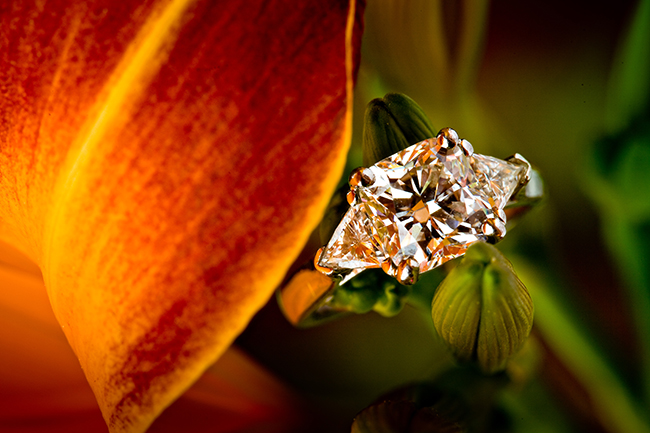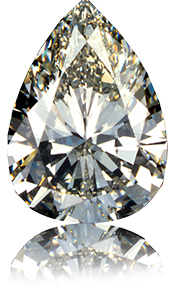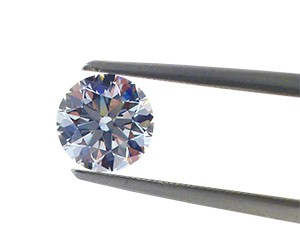IIA Technologies: A World Leader In Grown Diamonds

By Mason Southmore
Marilyn Monroe said it better than anyone before her or since: “Diamonds are a girl’s best friend.” While Marilyn could afford most any diamond she wanted... and Elizabeth Taylor most certainly did, the average guy has to dig deep into his savings account to come up with the means of buying an engagement ring worthy of his true love.
More than that, finding a reputable dealer is also a major factor in choosing a stone. There is the color, cut, shade, perfection of the stone, all to be considered. Most people don’t have the technological expertise to see the flaws in a stone that could seriously affect its value.
Merchants are also always on the lookout for ways to increase the bottom line. So-called “chocolate diamonds,” at one time were considered to be of little value. Thanks to a marketing campaign they have become highly desirable today.
We all know that diamonds are carbon (make that “coal”) that has been compressed underground with tremendous pressure and heat. Until now only Superman was capable of creating an artificial diamond by squeezing a lump of coal in his incredible hands. We assume Lois Lane was the recipient.
The dream of creating a man-made diamond had bedeviled scientists for eons. How do you create the clarity, beauty, cut and, especially, the hardness of a genuine diamond?

Impossible!
Well not to the folks at lla Technologies, a company that appears to have uncovered the secret that nature has been hiding for billions of years. The firm is named for the rarest and most pure diamonds, comprising less than two percent of all mined diamonds and called “Type IIa.”
The demand for the beautiful stones is at an all-time high with the current rise of a strong middle class worldwide. Jewelers search for quality stones that are conflict-free. Conflict diamonds, brought to the public consciousness in the movie “Blood Diamonds,” are mined by outlaw regimes using virtual slave labor. To counteract that, legitimate dealers certify their stones to be “Conflict Free.”
With the process developed by lla Technologies, there is no question about the origin of the stones. Improving on the idea developed by the cultured pearl industry, wherein a grain of sand is implanted in an oyster to generate the growth of either a black or white pearl, they use a similar method to create diamonds.
Diamond is one of the hardest known substances on earth. They can bear high radiation without triggering an immune response, thus making them useful in construction, nuclear engineering and medicine.
To make the purest gems, the technicians at IIa Technologies refined a process called “chemical vapor deposition.” They use a vacuum chamber and place fingernail thin diamond “seeds” under a shower of microwaves and methane and hydrogen gases. This process builds layers of carbon bonds.
Moving forward, the company opened a facility in Singapore, the world’s largest diamond growing facility in the world and produced more than 300,000 carats in a year. This process has little environmental impact as opposed to a mining operation and uses half the energy.
Take that, Superman!
Without a microscope these man-made diamonds cannot be distinguished by the naked eye.
All of that being said, there are doubters, such as Dr. Ravi Dahr of the Center for Customer Insights at Yale University. Dr. Dahr feels that customers will still see them as “unauthentic.”

These man-made gems replicate the conditions necessary to produce natural diamonds and are virtually free of impurities. They emerge in much the same condition as natural diamonds with a rough surface. They are polished, using the same equipment and method and produce the same brilliance, sparkle and fire that any mined diamond has.
The man-made stones are virtually identical to natural and sell for a whopping 30-40% less than mined diamonds. That’s a boon for a young man on the hunt for a nice ring for the young lady he will ask to become his wife.
Love is not the only beneficiary of these stones. Diamonds are a major component in many commercial endeavors. They are used to polish other materials because of their degree of hardness. Diamonds unsurpassed thermal conductivity make them ideal for electronics as they can carry more heat than silicon generally used in semiconductors.
IIa Technologies is now working on a process to grow diamond plates that will enable smaller, more powerful devices that do not overheat. The possibilities are almost limitless. In a recent year, industry (construction, nuclear engineering and medicine) used some 1,500 tons of diamonds. Surprisingly about 99% were lab grown. This ability saved firms untold million of dollars that were, hopefully, passed along to customers.
Until now very few women were able to possess Type IIa diamonds because of their rarity and cost. Two who could and come immediately to mind are Queen Elizabeth and the late actress, Elizabeth Taylor.
Taylor got the ring as a gift from fellow actor, Richard Burton. According to the story, Burton made a negative comment about her hands and then told a friend: “That’s going to cost me.” And cost him it did.
He got into a bidding war with Aristotle Onassis for a 69.42 carat, inch thick stone. The Cartier Jewelers won the bidding competition and one day later sold it to Burton for $1.1 million, making a $50,000 profit in one day. The stone was so huge that Taylor ultimately had it converted into a necklace.
Had Burton had the option of purchasing one of the IIa Technology diamonds, he could have saved himself more than $440,000.



